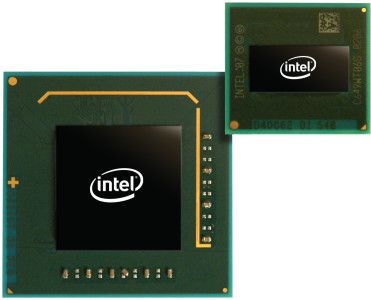From our front-page news:
One problem with a new product being so successful is that it's sometimes difficult to keep up with the sheer demand, especially if you don't have the factory power to back it all up. Take Nintendo's Wii for example. Despite the fact that it was released two years ago, it's still in short demand, and the only way to guarantee a console is by 'knowing someone' who works at a retailer that carries them.
Well apparently Intel is suffering a similar issue with Atom. The demand is so high, that they are simply unable to build enough, even though they yield close to 2,500 per wafer. Thank ASUS, I guess, for kicking off the netbook PC revolution, because since they released their Eee PC, at least ten other companies have followed suit with their own mini-notebooks. Slowdown? Not going to happen for a while.
What could result from Intel's inability to keep up with demand might be extra sales for VIA, of their Nano processor. Nano has its own caveats, but when Atom supply is limited, some companies are going to have to look elsewhere. As Ars Technica mentions, HP is the first company to pick up on Nano for their own netbook, but it wouldn't be surprising to see other companies offer special models. This could be resolved if Intel converted one of their fabs to push out Atom, but that would of course affect another product line. Tough decisions at Santa Clara, it seems. Who said success was easy?

If anyone benefits from Intel's constraint, I'd expect it to be VIA, but I also expect Santa Clara to keep a very close watch over Atom's growth. If the company feels that it is losing important sales due to production constraints, it might very well decide to take a (small) hit in another processor family in order to establish Atom's presence in as many first-generation netbooks as possible.
Source: Ars Technica
Well apparently Intel is suffering a similar issue with Atom. The demand is so high, that they are simply unable to build enough, even though they yield close to 2,500 per wafer. Thank ASUS, I guess, for kicking off the netbook PC revolution, because since they released their Eee PC, at least ten other companies have followed suit with their own mini-notebooks. Slowdown? Not going to happen for a while.
What could result from Intel's inability to keep up with demand might be extra sales for VIA, of their Nano processor. Nano has its own caveats, but when Atom supply is limited, some companies are going to have to look elsewhere. As Ars Technica mentions, HP is the first company to pick up on Nano for their own netbook, but it wouldn't be surprising to see other companies offer special models. This could be resolved if Intel converted one of their fabs to push out Atom, but that would of course affect another product line. Tough decisions at Santa Clara, it seems. Who said success was easy?

If anyone benefits from Intel's constraint, I'd expect it to be VIA, but I also expect Santa Clara to keep a very close watch over Atom's growth. If the company feels that it is losing important sales due to production constraints, it might very well decide to take a (small) hit in another processor family in order to establish Atom's presence in as many first-generation netbooks as possible.
Source: Ars Technica
